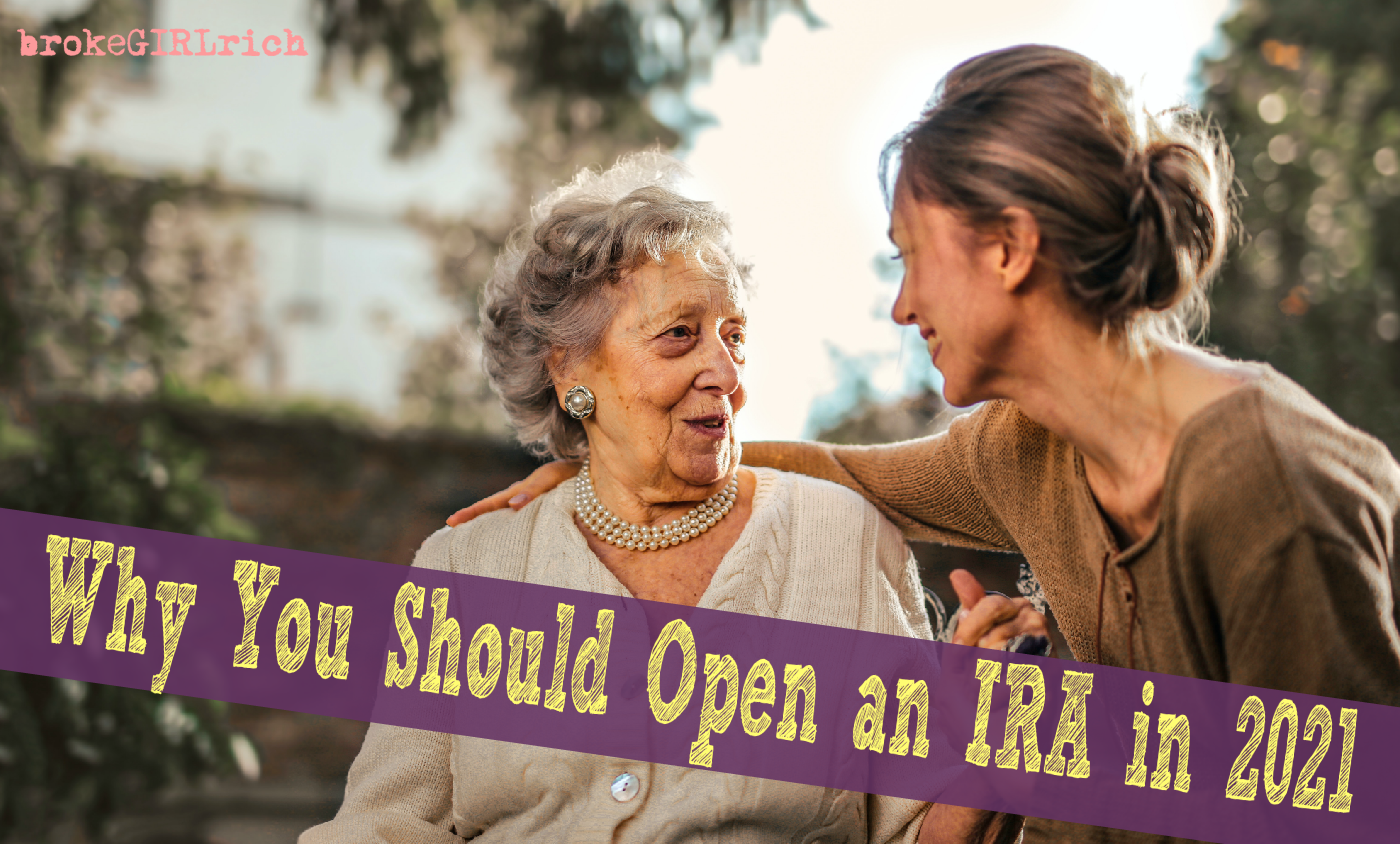
Why You Should Open an IRA in 2021 | brokeGIRLrich
An IRA is an Individual Retirement Account and mine has played a key, if not the key, role in my financial success.
And it all started with a stroke of luck and the right person coming into my life. When I was 25, I started dating a guy who peer pressured me relentlessly – to open an IRA. He literally would make fun of me because I didn’t have one (or any kind of financial plan really).
In case you have never dated a super-frugal weirdo, let me do some of the peer pressuring for you.
Retirement accounts are awesome when you’re young because you don’t need much to reap the power of compound interest.
Retirement accounts accrue interest with no additional work no your part. That interest gets added back into the account. Now a larger amount accrues interest. That larger number gets added back into the account. And it repeats over and over.
The more years you have for this cycle to repeat itself, the less money you have to actually invest to create a greater return.
Honestly, if I understood these things correctly, I would’ve opened an IRA when I got my first job, because even a little bit really adds up over time.
So what do you need to open an IRA?
- Taxable income – you can only contribute up to the amount you claim on your taxes.
- Example, if you make $4,000 working part time this year, you can only contribute $4,000 to the account, even though it has a $6,000 limit (in 2021).
- If you’re a high earner, check the income limits for both the Roth and Traditional (they’re different and can change a little annually). You may be unable to contribute.
- If under 18, a guardian or custodian to open the account for you.
Then you need to pick your type of IRA – Traditional or Roth.
Traditional means you get the tax benefits immediately. If you contribute $2,000 this year, you get to reduce your income by $2,000 when you pay your taxes for this year. Then when you make withdrawals from your IRA in retirement, you pay taxes on the amount you withdraw each year.
Roth means you get the tax benefits later, when making withdrawals during retirement. This means that if you contribute $2,000 this year, you still pay your taxes like normal, without the $2,000 deduction but everything you withdraw from your IRA in retirement is tax free.
You can spend a long time trying to crunch those numbers to optimize them. I’ll level with you – I didn’t. I just figured I could afford the taxes now and would rather make things easier in retirement and picked a Roth.
Whatever you pick, picking one, even if you haven’t perfectly optimized everything, is better than making no decision. They are both good.
Then you need to pick where you want your IRA account to be. There are so many options. I have mine at Fidelity.
There are two main things you want to watch for – does the account require a large initial lump sum to open and does the account require you to make regular deposit of a certain amount?
There are plenty of accounts that don’t require either of these.
The Fidelity one I opened in 2009 required me to deposit $2,000 the first time to open the account and that was the only requirement it had. A lot of investment firms required some kind of lump sum deposit to open the account back then.
Most banks don’t require this lump sum anymore, including Fidelity.
Some smaller banks can require that you make a monthly contribution of at least X amount to open, so make sure you check the fine print.
I recommend just picking one with no lump sum and no required contributions, though you may already have a savings or brokerage account with a bank and want to stay with them.
Some places to check are:
- Fidelity
- Charles Schwab
- Vanguard (requires $1,000 initial contribution)
Another reason an IRA is a rockstar account is that $6,000 is a lot of money but possibly a doable amount of money to save each year.
Honestly, if you can’t get anywhere near $6,000 – do what you can and that’s still awesome! $20 a month will actually make a difference in the long run if you start young.
But if you can hit that $6,000 a year goal starting around 20, with pretty conservative returns, you could probably stop investing in your mid-30s and still have over a million dollars come retirement.
If you go the Roth route, that’s over a million tax free in retirement.



